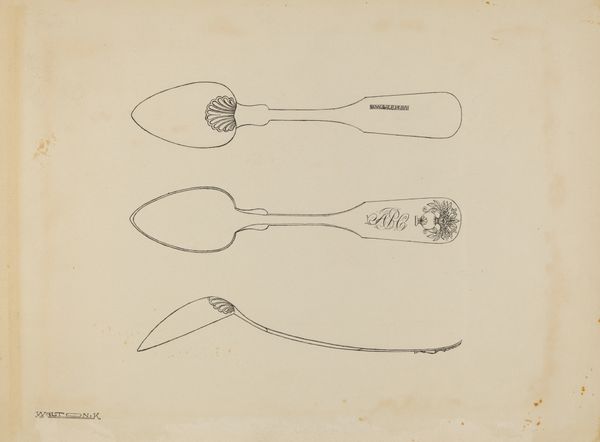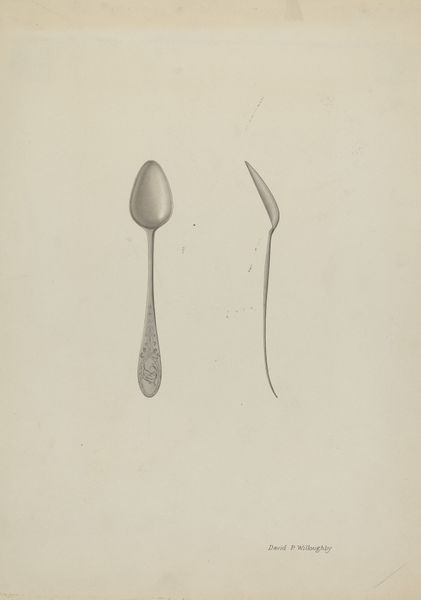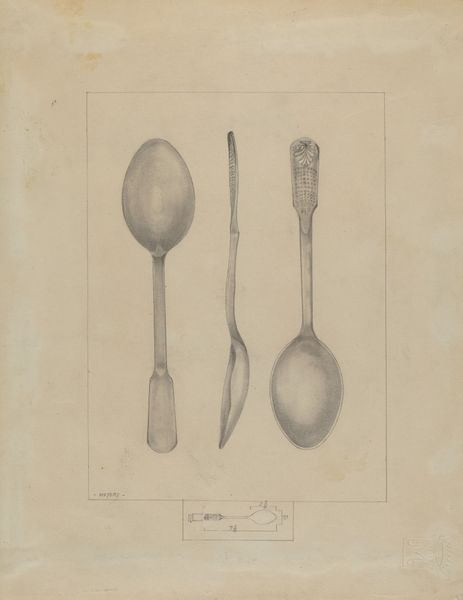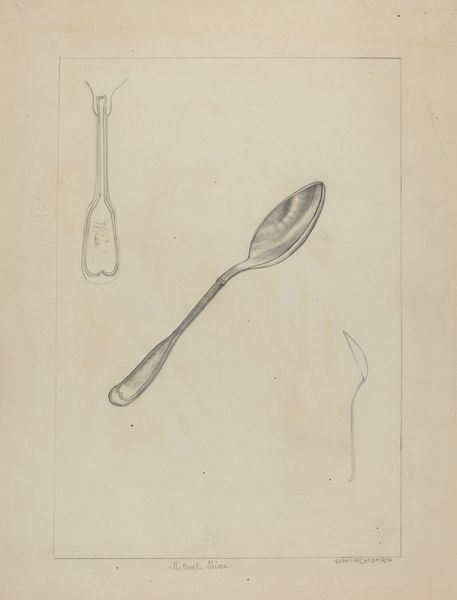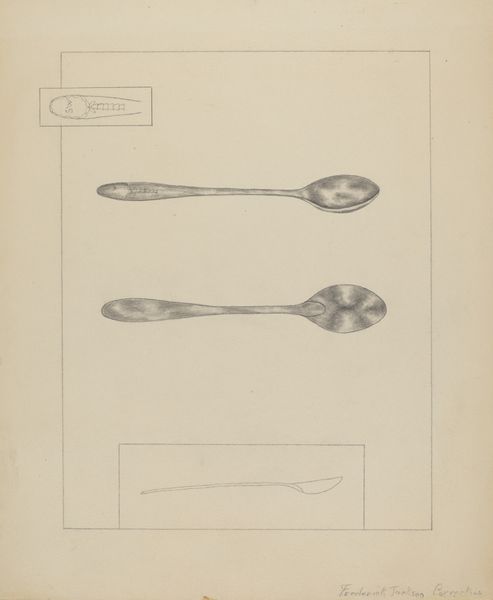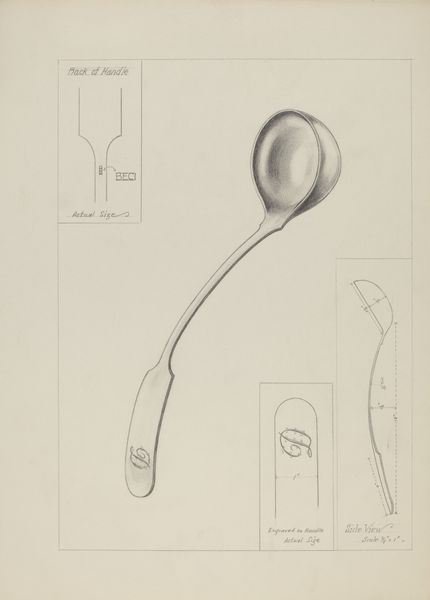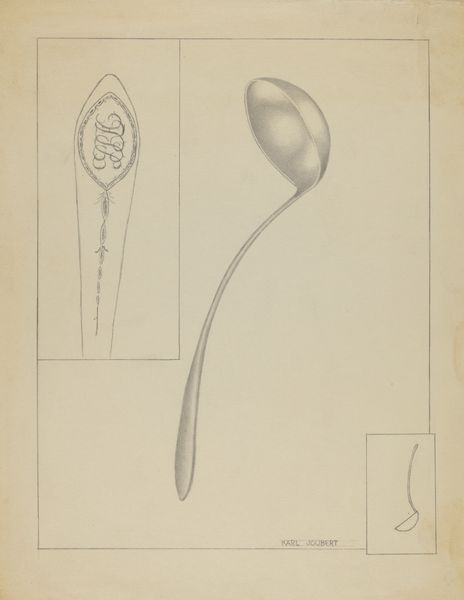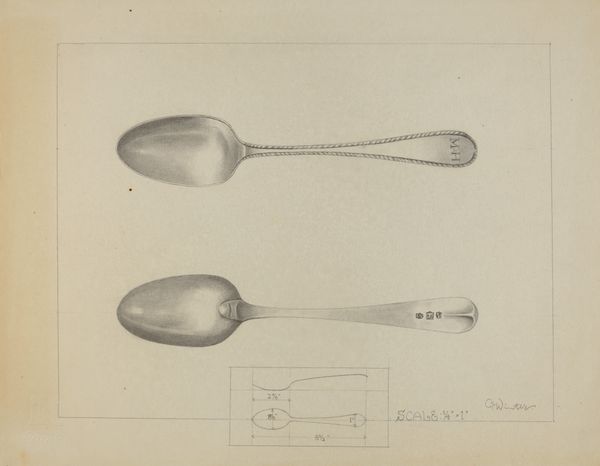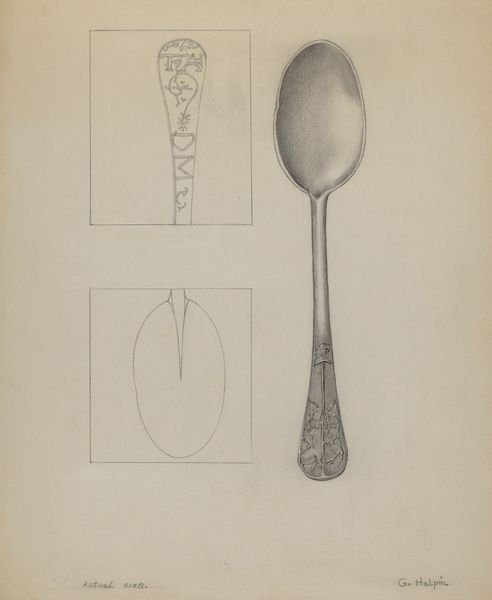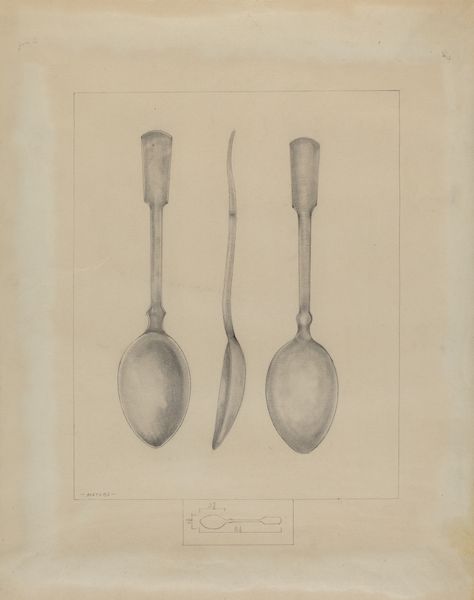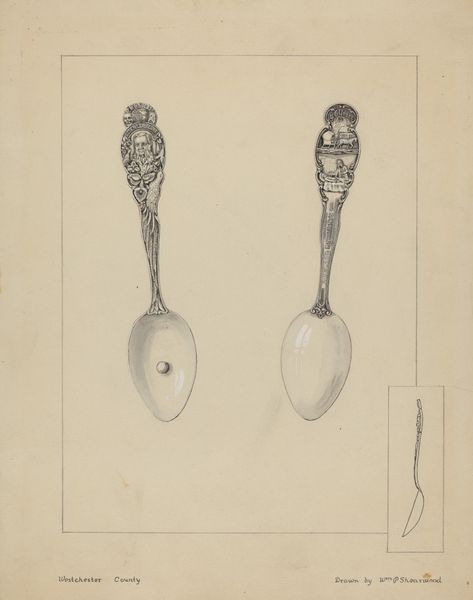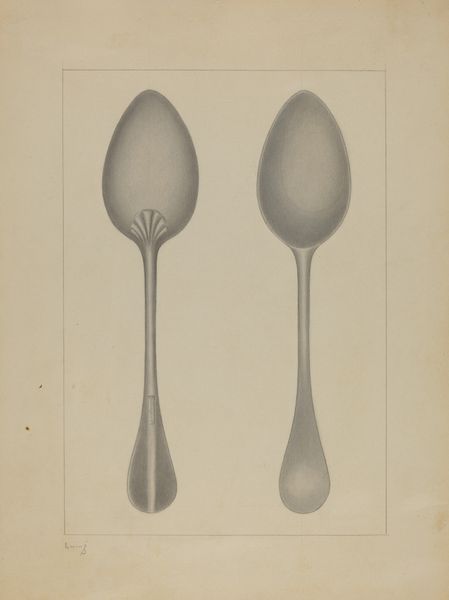
drawing, pencil
#
pencil drawn
#
drawing
#
amateur sketch
#
toned paper
#
light pencil work
#
pencil sketch
#
sketched
#
incomplete sketchy
#
pencil drawing
#
detailed observational sketch
#
pencil
#
pencil work
#
realism
Dimensions: overall: 29.4 x 23 cm (11 9/16 x 9 1/16 in.) Original IAD Object: 5 21/31" long
Copyright: National Gallery of Art: CC0 1.0
Curator: This is a work called "Silver Teaspoon," a pencil drawing on toned paper created by Francis Law Durand between 1935 and 1942. Editor: The object seems so commonplace, but there's a delicate precision to the drawing that elevates it. It feels almost like an engineer's draft, stripped of sentiment. Curator: Exactly! The artistic process is front and center here, revealing how even mundane items gain value through close study and skilled craftsmanship. It almost challenges what we traditionally define as art versus applied art. What social narratives do we find implied here? Editor: The silver spoon as a status symbol is almost cliché, yet this piece seems to resist that reading. The artist's focus on its form and the slight imperfections visible—a scratch here, a smudge there—speaks more to the spoon’s lived history as an object than to aspirational wealth. Curator: Absolutely. This connects directly to its context. Think about the Depression era; the act of meticulously depicting a common object, maybe even one saved from better times, becomes a poignant commentary on value and utility. This pencil drawing shows us a glimpse of this item’s existence in time. Editor: And there's a subtle politics in depicting something so domestic in such a stark, analytical way. Where might this object have been showcased and what audience may have engaged with such humble elegance. Curator: And the chosen medium also informs the message. Pencil, a humble and accessible material, versus the silver it represents. It hints at a democratizing impulse – making something precious visible and accessible through art. Editor: I agree. It almost functions as social critique through quiet observation. By highlighting both its beauty and inherent usefulness, we are being invited to reconsider our relationship with simple manufactured goods. Curator: Precisely! It shifts our perspective. A seemingly simple object, seen through a specific process and situated in a distinct socio-economic context, reveals itself as a locus of artistic, social, and historical meaning. Editor: Indeed, a common artifact sketched at a particular moment and within a precise cultural fabric yields profound understanding, reshaping its place in both society and history.
Comments
No comments
Be the first to comment and join the conversation on the ultimate creative platform.
